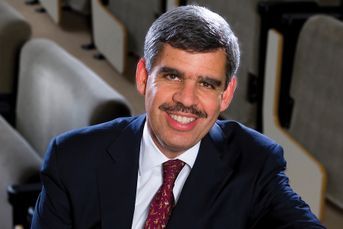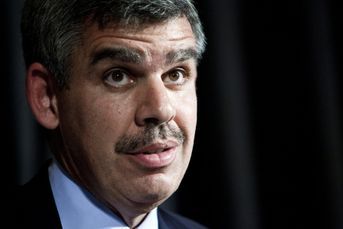Pimco’s El-Erian: Policymakers are ‘all in,’ but the hand is weak
Policymakers find themselves in a position reminiscent of an “all-in” poker player holding a weak hand in a…
Policymakers find themselves in a position reminiscent of an “all-in” poker player holding a weak hand in a high-stakes game: The external signaling is one of confidence: The hope is that the less pleasant internal reality can be altered by new cards, and the inclination is to use a huge wallet to bluff other players into folding.
Policymakers did not get to this point by choice. Instead, it is the outcome of a number of emergency decisions made during an unprecedented financial crisis, many of which were made in the context of great uncertainty. They had little choice but to act quickly and reconcile inconsistencies later. Yet, as a result of bold measures that succeeded in reducing the likelihood of a global depression, the Federal Reserve and the Treasury Department are now forced to bet heavily on a relatively weak hand — namely, that a surge in asset prices can fuel a broad-based recovery in consumption, production and employment. In the meantime, market distortions and unusual correlations are multiplying.
A sustainable economic growth surge is more important than ever. Without it, household balance sheets will not recover in an orderly fashion, and the job market will remain highly vulnerable.
Moreover, the housing market will not have the income support needed to stabilize prices, current valuations in equity and risky bond markets will not be justified, and the government will not be able to arrest and counter the rapid deterioration in its budget deficit and debt dynamics.
Will the authorities succeed with this large bet? So far, the evidence is mixed. On the one hand, zero interest rates and massive liquidity injections have made it very uncomfortable for in-vestors to stay in cash. Many have folded, opting to venture out and take on more risk. The result has been a surge in the price of equities and corporate bonds. Government bond yields have been relatively well-behaved, notwithstanding significantly higher borrowing and efforts to lengthen the average maturity of outstanding public debt.
This appetite for more risk lets many big companies secure new funding and term out maturities, but the effect on employment and economic activity has been disappointing, and that is what matters most.
Gross-domestic-product growth remains sluggish, especially given the depth of the previous decline and the massive stimulus injected. Underemployment and unemployment, already at 17%, will go even higher. Along with growing evidence that the employment challenges are becoming more protracted and structural in nature, this will hold back spending by those who are fully employed.
Meanwhile, the uncomfortable distinctions will become even more acute. It is not just about Wall Street versus Main Street. It is also the growing divergence between large companies with easy access to capital market financing, and smaller ones that face huge difficulty in obtaining bank loans. The economy’s pipes are still too clogged and in some cases too outmoded to provide for a recovery consistent with sustainable fiscal and monetary conditions.
Consequently, it is the unintended consequences of policies that increasingly will rule the roost.
I suspect none of this really comes as a surprise to Washington. Yet it will not be viewed as a sufficient reason to change policy — partly because of the hope that time might unclog the pipes but also because they see no other good policy options out there that would justify changing course, especially given the financial and political capital already committed.
Against this background, we should expect policymakers to maintain the highly accommodating policy stance now in place. And while we should hope for success, we should also expect that seeming improvements in economic activity will come at the cost of having to clean up after some financial-asset bubbles, as well as weakening the long-term standing of the United States in the global economy (including the confidence in the dollar as the reserve currency).
With time, policymakers will have no choice but to supplement the present emphasis on stimulus with three politically and fiscally delicate changes: first, alter the mix of policies to include more meaningful structural reforms aimed at enhancing growth potential; second, acknowledge that, pending the realignment of the economy, greater emphasis must be placed on improving our social safety nets and third, do this while restoring long-term fiscal sustainability.
Let us hope that this change comes earlier rather than later. The longer it takes for this to happen, the greater the ultimate cost in terms of higher unemployment, lower growth potential and forgone welfare.
Mohamed A. El-Erian is the chief executive and co-chief investment officer of Pacific Investment Management Co. LLC.
Learn more about reprints and licensing for this article.





